Types of Chalcedony
TYPES OF CHALCEDONY
BLUE CHALCEDONY -
This is a very attractive
stone with different hues
ranging from lilac to periwinkle
blue to lavender. The great
increase in the popularity
of blue chalcedony over
recent years has pushed
its price up and good quality
strong blue material can be
moderately expensive.
CARNELIAN -
Carnelian has been a popular stone for many years. The colours range
from a pure and strong intense orange-red, to softer orange-browns and
reds. Top quality material is semi - transparent with a strong colour that
appears to glow. The colour of carnelian can be intensified by heating and
dyeing. Sometime stones are actually agates that have been treated or dyed.
Natural carnelian should have a cloudy arrangement of colour, without any slight
banding or colour zoning. Carnelian has a long history and can be found in
antique jewellery as engraved or carved cameos.Apart from the best quality
orange-red material it is relatively inexpensive.
Below L to R: Green chalcedony necklace, blue chalcedony ring, red carnelian
and silver brooch
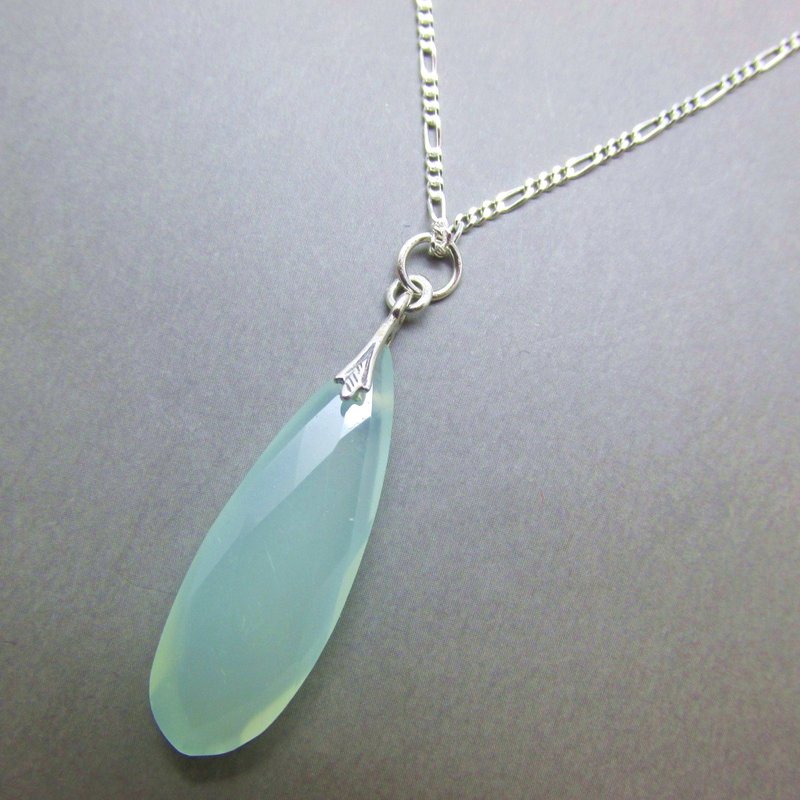
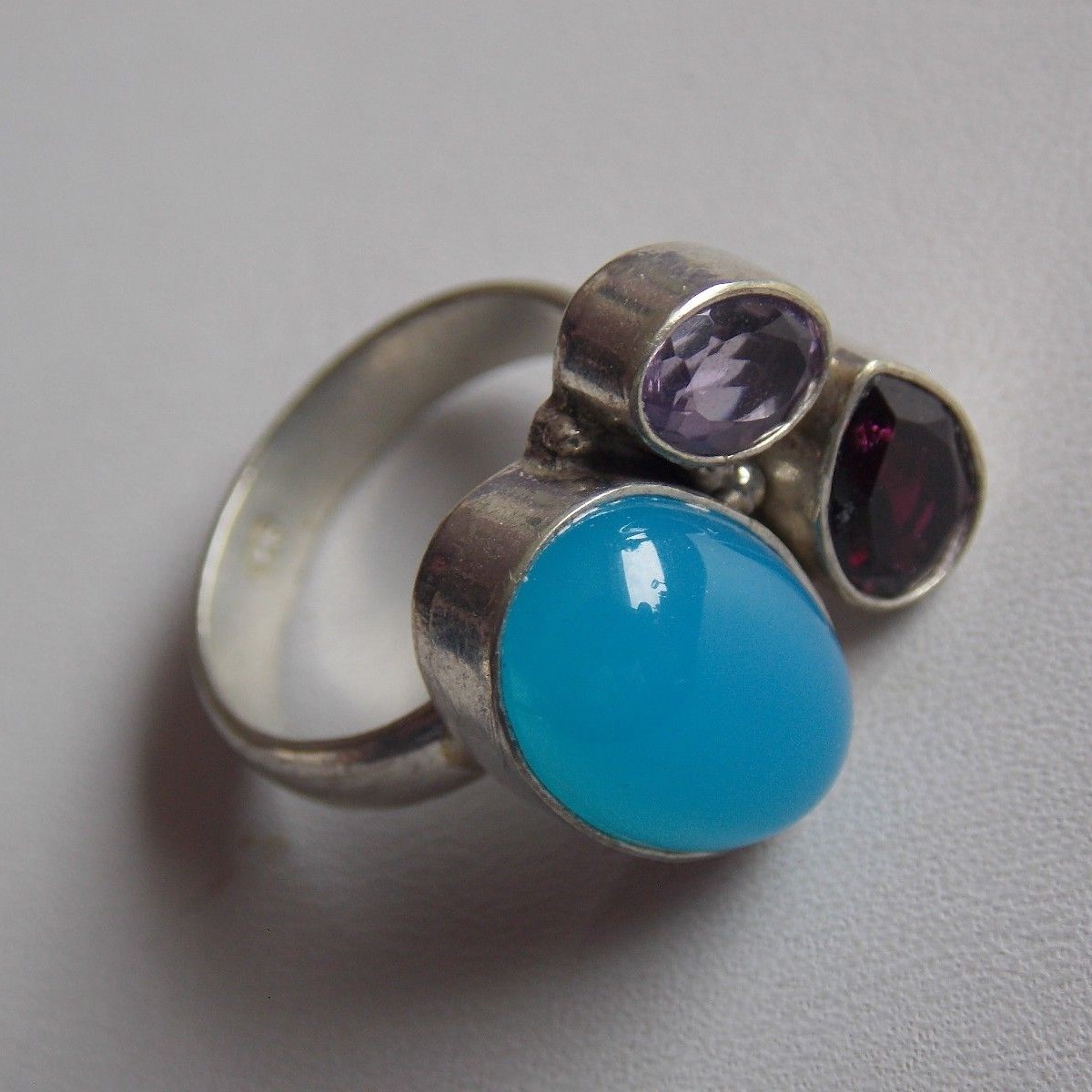
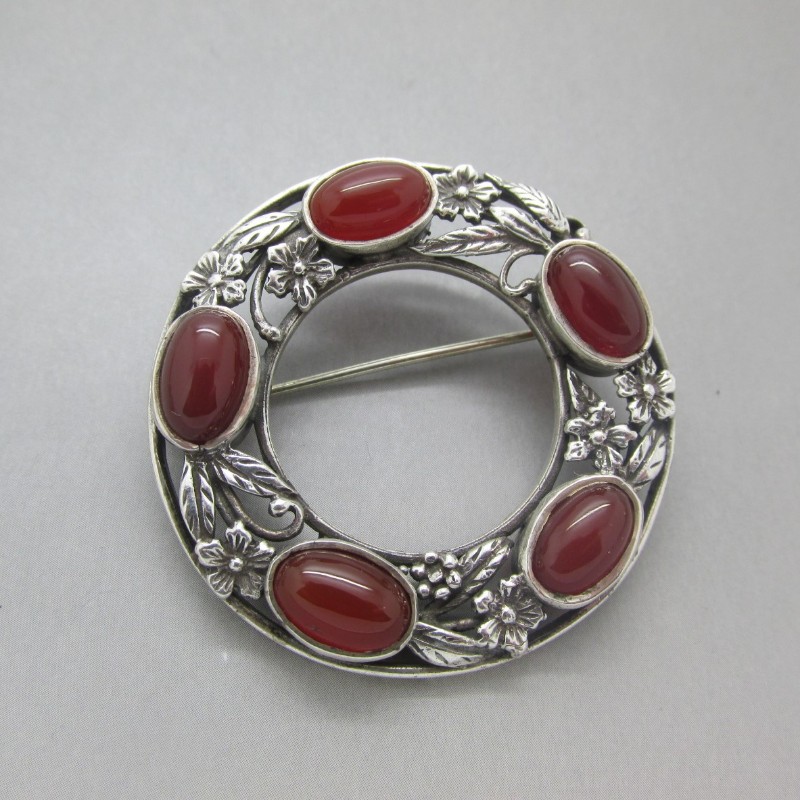
CHYROPRASE -
Top quality chrysoprase should have a strong apple green colour and be transulcent.
Chrysoprase can vary in colour depending on its nickel content and can be pale green,
emerald green, or dark green. The stone can be translucent, or at times can appear
opaque. Colour tends to be evenly spread without any zoning or banding. Sometimes
inclusions in the form of brown or black spots can occur giving a jade like appearance.
Chrysoprase is an attractive stone and has been used by jewellery makers
for centuries. It is durable and readily available. The popularity of strong coloured
chrysoprase has made it more expensive, however, the lower grade colours are
reasonably priced.
ONYX -
When seen in its natural state onyx has straight bands of white
and earthy brown colours. It is much used in cameo and carving work.
Black onyx is not onyx but dyed black chalcedony or agate. It does not
naturally exist. Dyed black onyx has been widely used in jewellery
for many years and was often featured in the jewellery designs of the
Art Deco period. They created geometric style jewellery using slabs
of black onyx set with marcasites.
Below L to R : Chrysoprase brooch, black onyx and ruby art deco ring,
and sardonyx beads
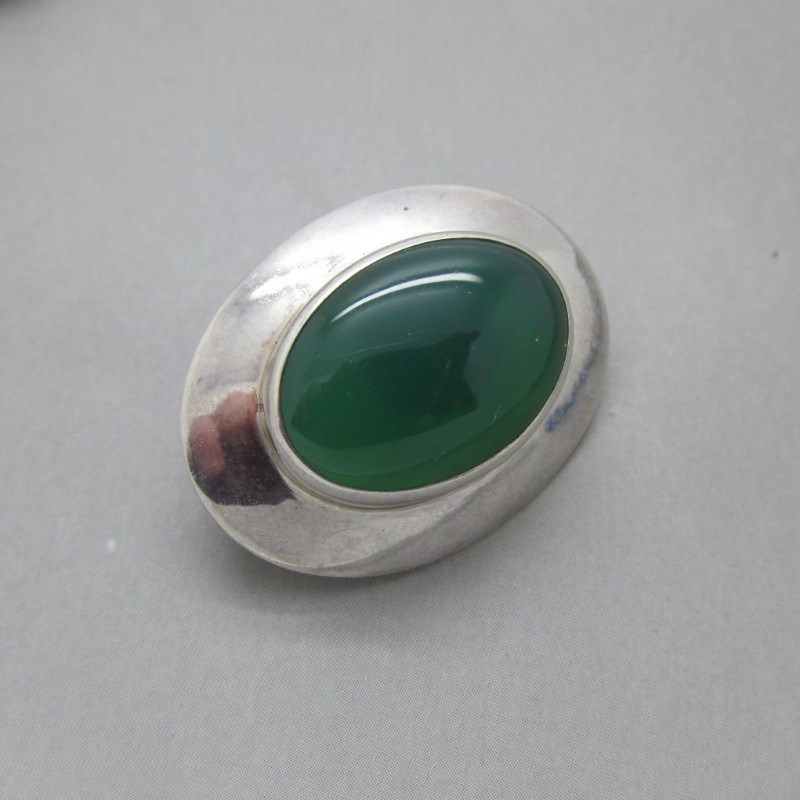

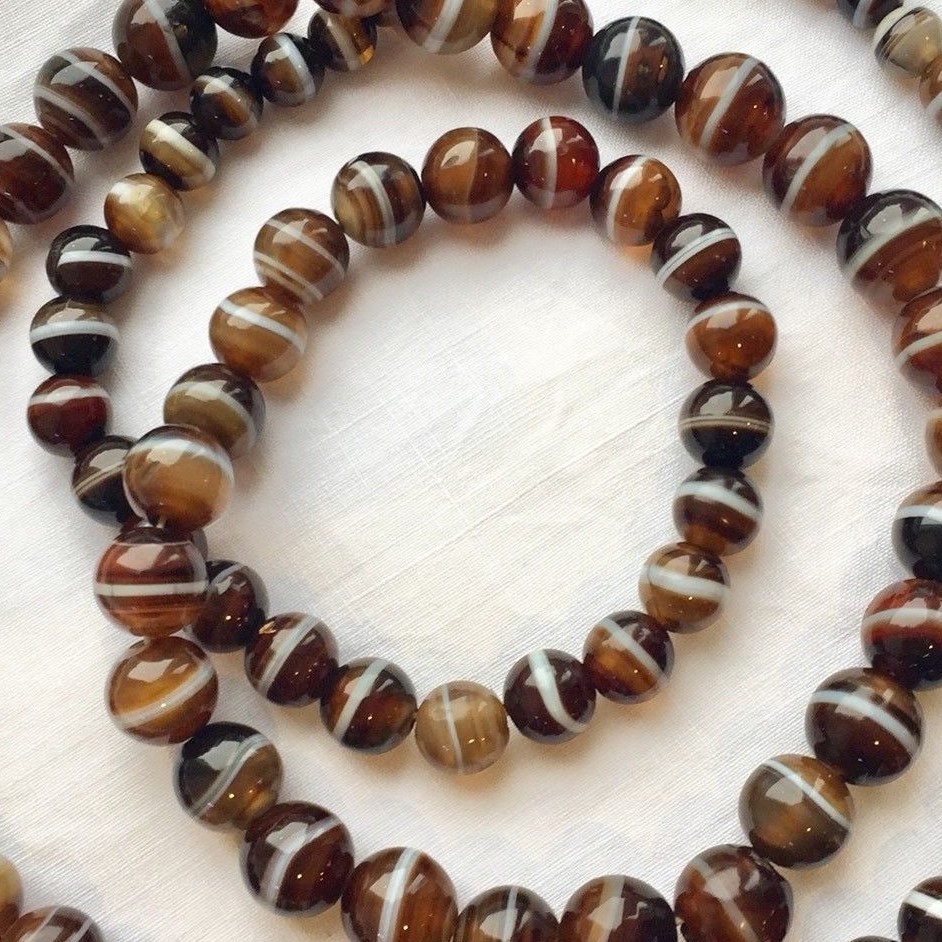
SARD AND SARDONYX
Sard is a brown - red to orange in colour. Sardonyx is banded sard, with brown
and apricot stripes. This material is often used in cameos and is suitable
for inlay work.
